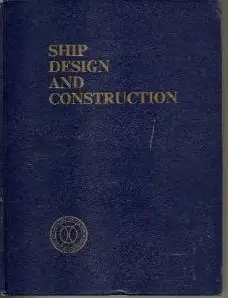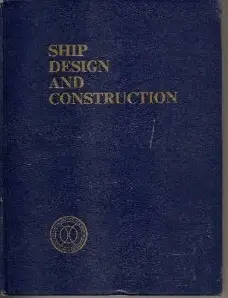Robert Taggart, "Ship Design and Construction"
English | 1980 | ISBN: 0960304800 | 737 pages | PDF | 45 MB
English | 1980 | ISBN: 0960304800 | 737 pages | PDF | 45 MB
Preface
The 1980 edition of Ship Design and Construction is a descendant of the Design and Construction of Steel Merchurlt S11ips, published by the Society in 1955, and the rekrision of that book entitled Ship Desigrl and Construction published in 1969. Although its antecedents covered much of the same general subject matter, the present volume has been essentially completely rewritten and thus stands alone as a significantly different form of treatise on the subject.
The emphasis has been placed upon the design and construction of ships to fulfill specific missions; throughout the text the rationale for configuring the ship to do a specific job or a specified m~ltiplicit~y of jobs is highlighted. -4s a result, few of the chapters contained herein are directly comparable to those found in the previous editions. Additionally chapters on Load Lines, Tonnage, and Launching, previously covered in the Principles of Naval Architecture are now more logically contained within this volume as well as chapters on Contracting Arrangements and Trials and Preparations for Delivery.
A general format has been adopted that leads the reader through the derivat.ion of mission requirements, development of conceptual and preliminary designs, including hull form and arrangements, deriving acceptable load lines, and performing tonnage calculations. Ensuillg
chapters deal with the overall structural design, the design of structural components, and with the selection and connectiou of hull materials. With these basic elements decided upon, the more detailed aspects of design are treated including hull outfit and fittings, and cargo handling techniques and equipment for dry, liquid, and hazardous cargos. 'l'he final design aspects wind up with treatments of maneuvering, navigation, and motion control, techniques for controlling the interior environment of the ship, and methods and materials for preservation of the hull. In making the transition from design to construction the various stages of cost estimating, contracts, and governmental oversight are discussed followed by
a detailed explanation of the equipment and techniques involved in ship construction. The various processes used in ship launching, including the most modern methods of transferring a vessel from the building site to a waterborne condition, are described and launching calculation techniques are delineated. The volume concludes with a discussion of ship trials and the final preparations required for delivery from the shipyard to the owner.
In this 1980 edition, the 1969 edition Glossary has been significantly expanded to cover all unfamiliar terms used in both design and construction of ships rather than only the construction terms defined previously. Acronyms, abbreviations, and symbols have been defined as they appear within the text instead of the previous practice of including them in separate tables. In general, the symbols used are in accordance with the 1963 Interna-
tional Towing Tank Conference Committee on the Presentation of Data.



